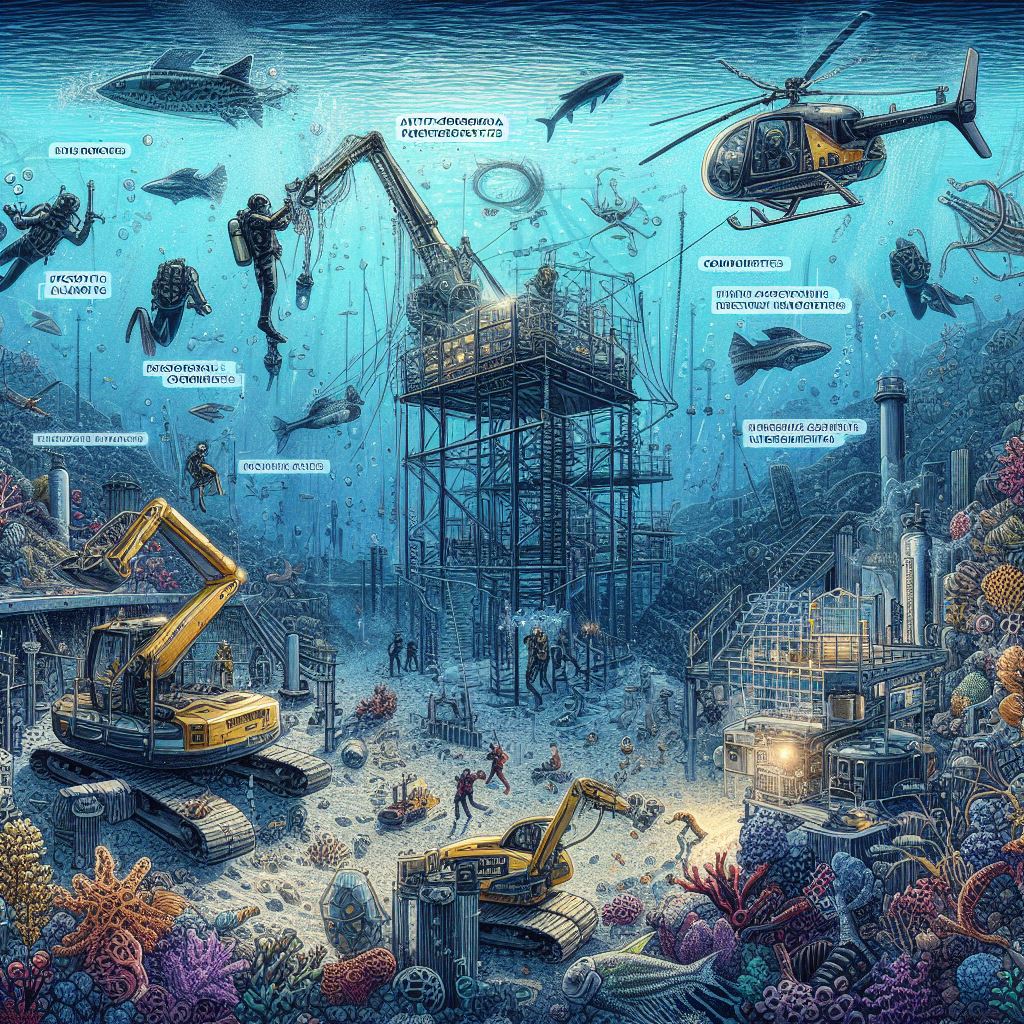
Navigating Depths: Innovations & Challenges in Underwater Construction
Introduction
Underwater construction has always captivated the interests and resources of civil and marine engineers, environmental scientists, and even construction investors. It combines marine engineering and subsea technology to create resilient ocean infrastructure, presenting a complex world where science and engineering collaborate to overcome unique challenges. The article intends to unfold the depth of knowledge in underwater construction and marine infrastructure by exploring its principles, hurdles, technological advancements, and practical implications through real-world examples and case studies.
I. Overview of Underwater Construction
Basic Principles and Methods
- Principle of Buoyancy: Ensuring stability in the structures amidst underwater currents and pressures.
- Material Selection: Utilizing corrosion-resistant and durable materials for extended longevity under the sea.
- Pressure Management: Designing structures that can withstand immense underwater pressures.
Example: The construction of offshore wind turbine foundations relies significantly on these principles, ensuring stability even under adverse conditions.
Methods
- Caisson Method: Employs a watertight retaining structure used to manage the water for the underwater construction.
- Cofferdams: A temporary structure enclosing all or part of the construction area to allow construction on the foundation.
Case Study: The Palm Jumeirah in Dubai effectively utilized the caisson method to lay the foundation, becoming a hallmark in underwater construction.
II. Challenges in Underwater Building
The submerged environment brings forward various challenges faced during underwater building:
- Pressure Variations: Affect structural integrity and worker safety.
- Visibility Issues: Hindered by water murkiness and depth.
- Communication Barriers: Limited communication capabilities below the surface.
- Material Degradation: Accelerated corrosion and wear in underwater conditions.
Quote: "The deeper we delve, the darker and denser it becomes; thus, engineering within such abyss demands a nuanced equilibrium between innovation and safety." - Marine Engineer, [Authoritative Book/Study]
III. Ingenious Innovations
A. Technologies Enhancing Underwater Construction
- Underwater Robotics: Efficiently executing tasks that are risky for human divers.
- Acoustic Telemetry: Enabling communication through sound waves, mitigating underwater communication issues.
- 3D Printing: Crafting structural parts on-site, reducing transportation challenges.
Example: The utilization of Remotely Operated Vehicles (ROVs) in inspecting and maintaining underwater pipelines, ensuring accurate and risk-free operations.
B. Material Advancements
- Anti-Corrosive Alloys: Enhancing longevity and durability.
- Polymer Concretes: Offering resistance against corrosive environments.
C. Techniques Adopted
- Scour Protection: Implementing techniques to safeguard structures against underwater current-induced erosions.
- Cryogenic Dredging: Minimizing environmental impact by using cryogenic techniques to freeze and extract material.
IV. Legal and Ethical Aspects in Underwater Construction
Sustainability and Environmental Protection
- Biodiversity: Safeguarding the marine ecosystem from construction disturbances.
- Waste Management: Ensuring minimal waste discharge into the ocean during construction.
Example: Environmental impact of submarine construction is meticulously monitored in the Baltic Sea pipeline projects, where regulations mandate stringent environmental protection practices.
Labor Laws and Safety
- Diver Safety: Ensuring safe working conditions for divers.
- Regulations Compliance: Adhering to international maritime laws and local labor laws.
V. Case Studies: Implementing Knowledge in Real-world Scenarios
A. The Channel Tunnel (Eurotunnel)
Navigating through the perplexing world of subsea engineering, the Eurotunnel exemplifies a case where risk management in underwater infrastructure development and innovations coalesce to surmount construction challenges.
B. NORWAY’s Subsea Tunnel
A depiction of sustainable underwater construction technologies, this tunnel preserves marine life and minimizes ecological impacts, embodying a paradigm of eco-friendly underwater architecture.
VI. Future Outlook and Emerging Trends
Prospective Technologies and Methodologies
- AI and Machine Learning: For predictive maintenance and data management in underwater construction.
- Biomimicry: Implementing designs inspired by natural marine structures and organisms.
Sustainability and Global Trends
- Blue Economy: Aligning economic activities with marine conservation.
- Net-Zero Emission Technologies: Emerging as a vital part in future submarine infrastructure development.
Conclusion
Sustainable underwater construction technologies and innovative methodologies are paving a new era, strategically addressing the challenges and steering marine engineering towards a sustainable, efficient, and technologically advanced future. With profound innovations in underwater construction techniques, the horizon seems broader, albeit requiring continuous research, discussion, and cooperative international effort to keep the abyssal depths within our navigable reach.
Engineering Topics Civil Engineering




